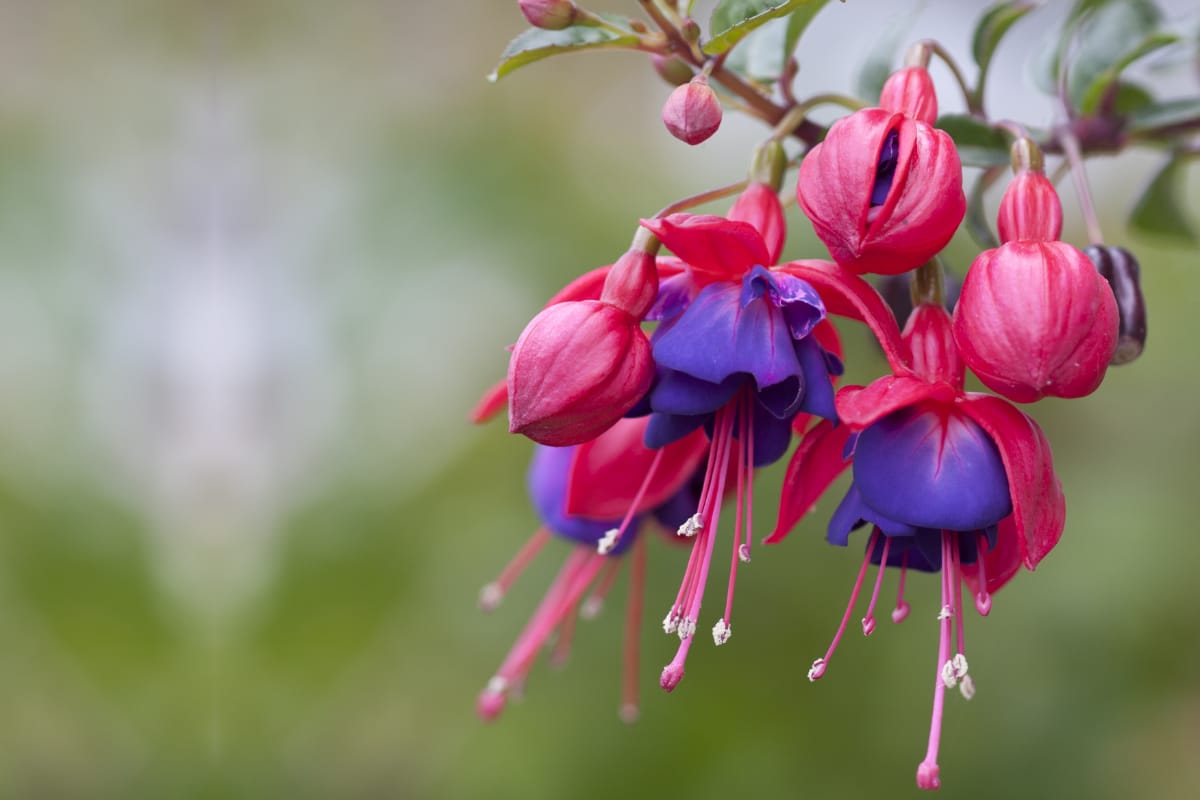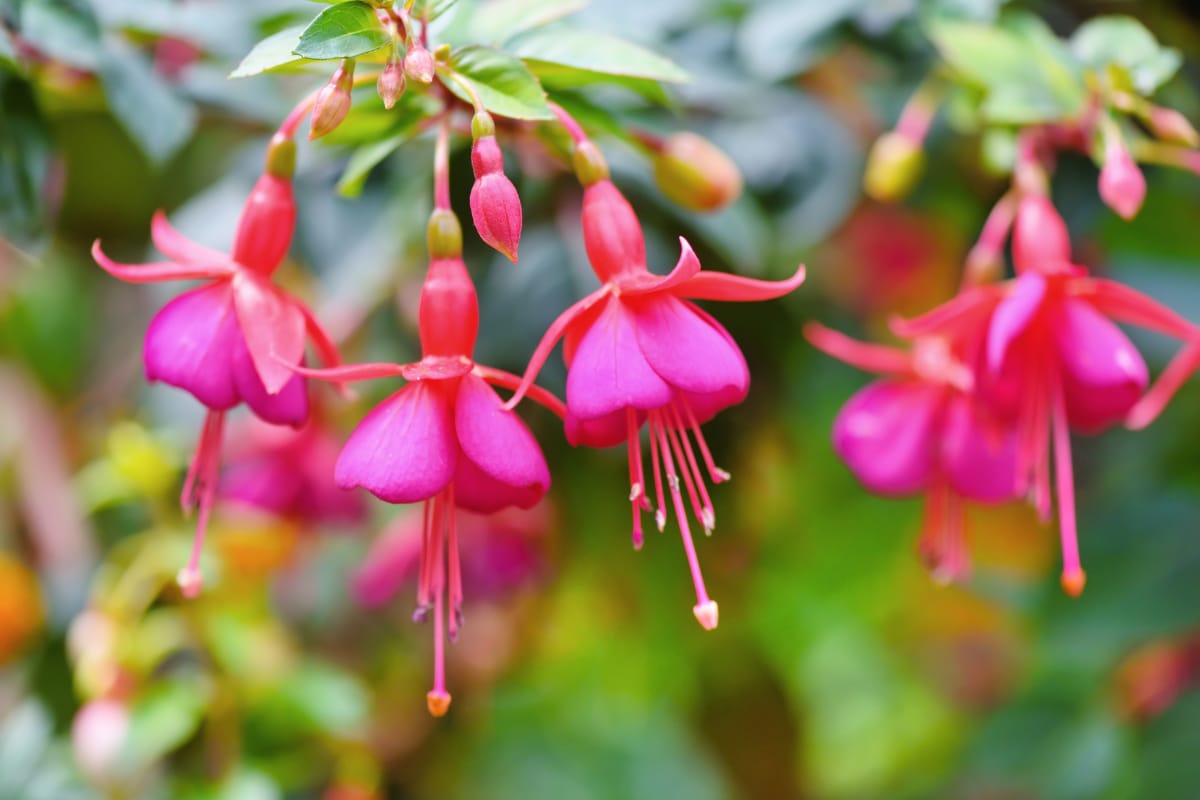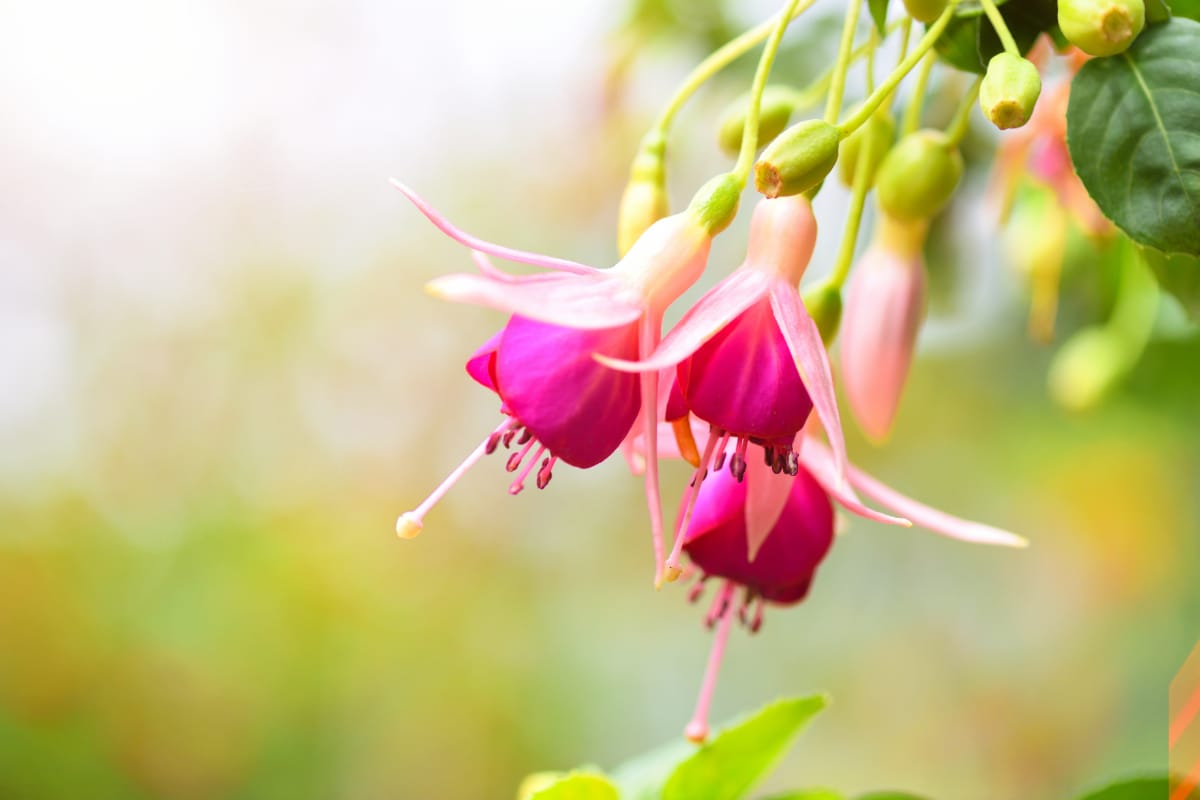Nothing in Basket!
In their native countries Fuchsias are adored by hummingbirds. Here in the UK a wide variety of bees enjoy the nectar rich flowers, especially as they can flower into late October, when the gardens start to look bare.
I fell in love with fuchsias when I was just a kid. Our local community centre held a fuchsia show which was a spectacular success and continued for many more years. My mother dragged me along with her, and although I wasn't going to admit it at the time, it was better than being in a sweet shop. This show had rows and rows of tables full of fuchsias, my mum could have easily bankrupted us if she had bought every variety she wanted that day.
It would be another 20 years before I finally got around to adding fuchsias to my garden, the first was a cutting from my mothers garden, the rest I bought and they failed miserably. So I did some research before I bought anymore. It turns out my south facing garden at that time was just too hot for them to survive in, plus I'd bought quite a few tender fuchsias that will die in our winters. My current garden has an area that gets some shade from early afternoon, so I've been able to start adding them in to the borders and pots.
I've actually found fuchsias quite hard to grow from cuttings, it has been the only plant so far that has nearly beat me. After trying every method I know and some more, I finally brought the cuttings in doors and put them on my kitchen window which gets lots of light but no direct sun. It worked, I'd finally succeeded, growing them in earth or starting them off in water worked as long as they were in a window that didn't get direct sunlight, I finally had multiple cuttings to fill the garden with.

Fuchsias look like dancing colourful skirts, the flowers last all summer long and often into autumn and there are thousands of varieties available, in shades of white, pink, magenta, purple and red. Some varieties have golden or variegated foliage, or purple or red-tinged leaves.
Fuchsias mostly come from Central and South America where they are pollinated by hummingbirds.
Both flowers and berries are edible. The flowers can be crystallised and used to decorate cakes and desserts, while the fruits of some varieties have a citrus, peppery taste and can be used to make jam.
Fuchsias are extremely versatile and can be grown as standalone shrubs, climbers, informal hedges or standards, as well as bedding plants in pots and hanging baskets for patio displays - all you have to do is make sure you have the right variety to fit the outcome you want.
Fuchsias are very easy to grow as long as you give them some sunshine, but not direct scorching mid-day sun (my mistake), in well drained soil, in a sheltered spot. For best results, feed, deadhead and water to keep the soil just moist. Hardy fuchsias will need to be pruned back hard in the spring. Once you see the first signs of life cut back to a new bud low on the plant.
Pinch out the stems of tender fuchsias in spring to encourage more flowers. Tender fuchsias need protection in winter, some need to be brought inside.

Fuchsias can be hardy or half hardy (tender).
Hardy fuchsias can survive the winter outside and are usually gown in a permanent spot in the ground. Some, such as Magellanica can be grown as an informal hedge.
Tender fuchsias can't survive the winter outside and will either need to be brought inside or discarded as if they were an annual at the end of the season. Tender fuchsias of the trailing variety, are often used for pots and hanging baskets.
They usually start to flower in May and can continue into mid autumn. If you live in a particularly mild area, they may even flower all year around. Both can be trained into standards.
Plant fuchsias in sun or partial shade, but never in a scorching south-facing spot as it can be too much. As the pendent flowers are easily blown off, a sheltered spot is preferable. Fuchsias can cope with any type of soil, but it must be moist and able to drain well.
Fuchsias can also grow well in pots, but they will need to be kept watered.
Plant hardy varieties in spring or early summer. Dig in plenty of well-rotted organic matter before planting, and firm and water in well. Add a thick layer of mulch, manure or garden compost, to keep in moisture and feed the plant. Like most other plants, until established they will need to be watered regularly. Hardy fuchsias tend to suffer if moved, so make sure you put them in the right spot.
Half hardy (tender) fuchsias can be planted out from late May (or once the frosty season is over). They will need to be hardened off, this is were you take them outside for a couple of hours a day, and increase the length of time they spend outside over a period of time until they can stay outside over night. When planted in pots, use a multi-purpose compost with added slow-release fertiliser from Spring.

Like many plants, once established, fuchsias can grow in the ground and be fairly self sufficient, although during drought they will need a good soaking every now and again. Fuchsias will need regular watering if kept in a pot, keeping the soil moist but not soggy.
Mulch hardy fuchsias that are growing in the ground in spring with well rotted manure or garden compost, this will help to lock in moisture and will also feed the plant. Feed fuchsias in pots regularly with a high potash liquid plant food (tomato feed) throughout summer to encourage more flowers.
If you want the plant to produce more flowers over a longer period of time, deadhead them.
Prune hardy fuchsias in spring, once new growth has begun to appear. Some stems may have died back, this is perfectly normal. Cut the old stems back to a pair of buds low down on the plant. My hardy fuchsias growing in pots are pulled up to the house and kept in a sheltered yet sunny position from autumn until spring to give them a little bit of protection. You can cover the pot in fleece, and put a thick layer of mulch on ground grown hardy fuchsias to give them a bit of extra protection when it's going to be a very cold winter.
Tender fuchsias should be lifted from the ground and moved inside, tender pot grown fuchsias should also be moved inside in autumn and over wintered in a cool, frost-free place, such as a greenhouse, porch or conservatory. Remove any dead or diseased growth, cut back by around half to keep them compact, and reduce watering. Once they're dormant and have dropped all their leaves, you can put them in to a frost-free garage or shed. In spring, top up the pots with fresh compost and slow release fertiliser.
Tender fuchsias are easy to propagate from softwood cuttings in summer. It's an excellent way to increase your stock and to replace any plants that may die over winter.
Choose healthy non-flowering shoots or pinch off the flower buds on the stem and remove the lower leaves from each cutting. You can dip the ends into rooting powder, but I never have and I'm getting good results. Fill a small pot with seed and cuttings compost or multi-purpose compost with extra horticultural grit added. Insert the cuttings around the edge of the pot. Water well and allow to drain.
You can place the pot of cuttings in a warm propagator, or cover with a plastic bag, sealing it with an elastic band. I keep mine in a window out of direct sunlight and spray them with water every now and again. After a couple of weeks you should notice new growth, at which point you can remove the lid or bag and pot the cuttings up into individual pots. Cuttings can be planted in the garden in the following spring.
Vine weevil is a common pest of fuchsias, especially if they are being grown in pots. Adult weevils nibble notches out of the leaves but it's the white grubs that do the real damage, they feast on the plants roots and can kill the plant before the problem is spotted. There are chemical solutions, which I won't give here, as I run a garden that doesn't use pesticides and all wildlife is welcome. I've found once one insect arrives, another one will soon follower that will keep leaf munching beasties under control.
A relatively new pest in the UK is the gall mite. The flowers become deformed and fail to develop, and the tips of the shoots may be swollen or discoloured. It won't kill the plant, but it doesn't look attractive. Cut off any infected growth when you see it and bin or burn it, but do not add it to your compost heap.
The first thing you need to do is find out if the fuchsia is hardy or tender. There is no point buying tender varieties if you have no where to over winter them, or you want minimal gardening jobs to do.
Next check its habit, there are three types, trailing, upright and climbers. Trailers really need to be in a hanging basket, or pot. Climbers need to be supported, where as upright can be left alone or trained into a shape.
Is your garden right for a fuchsia, it's cheaper in the long run to buy plants that fit your situation. That way you won't have to water or feed them which will cut down on your carbon foot print. Plus it's costly and disappointing if you keep buying plants that just can't survive in your garden.
Many garden centres sell plug plants (young plants) in early spring. This can be a cheaper way of buying them, as they can be bought for as little as 50p per plant. But you will need to start them off indoors before being planted out after the last frosts.
Nothing in Basket!
